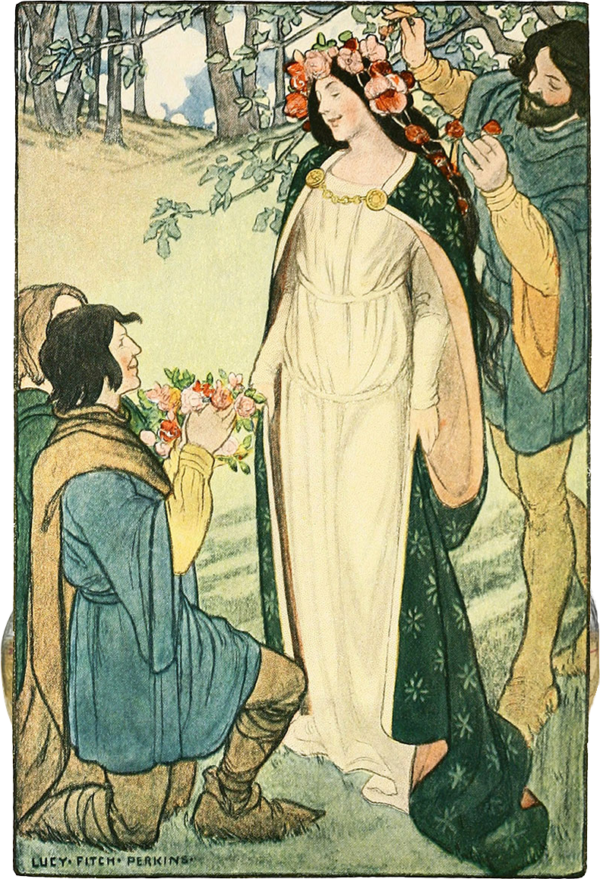“The heart of the plays is the transformative power of the imagination. You are about fearless creativity.”—Roger Holzberg, former VP / Creative Director, Walt Disney Imagineering, and founder of Reimagine Well
The Hero/ine’s Journey
In transitions you leave one way and go to another. In transformations you evolve into a new you. It’s dangerous. It’s critical. Your ancestors left you maps, stories, methods. The three plays illustrating Joseph Campbell’s journey of transformation are Gates In and Out, which describes the map of the journey, The Water of Life which is the archetypal masculine journey, and Waiting for Baba Yaga which is the archetypal feminine one.
If you want to have a reading, teach them, or produce them, make some arrangements with me. I’ll look forward to our exploration.

Gates In and Out
Following the path of Joseph Campbell’s Hero/ine’s Journey Wheel, Every Soul leaves Home and meets the Old One, who has advice for passing through the Gate In. Inside another world, the Temenos, Every Soul and Companion walk the Road of Trials, meeting a Dragon and a Witch. To reach the Gate Out, Every Soul must survive the Nigredo – the place of complete transformation. This play is a dramatic enactment of the journey central to every story ever told. Individuals can read it and understand the Hero/ine’s Journey. Family, friends, reading groups can read through it and discuss. It can be performed alone, or with one or both of the other plays, and/or incorporated into a workshop.
Characters: Six characters
Time: 40 minute production
Skills: Mime skills will be useful.
Performances
First Performance: St. Louis Jung Conference
Second Performance: Kansas City, Friends of Jung
Third Performance: Joseph Campbell’s 25th anniversary conference, Hudson, NY

The Water of Life
The King is ill and only the Water of Life can cure him. Two elder sons leave Home to try, but end up trapped. The youngest son has manners, avoids the traps, and receives gifts. He receives the Water of Life from the Lady, who will be free in a year and a day. Returning Home is perilous. Carrying the Water of Life back to his father, he frees his brothers, who steal it from him. His own actions redeem him, and he completes his journey back to the Lady.
Characters: Five characters
Time: 40 minute production
Skills: Mime skills will be useful.
Performances
This play toured with both the Colorado Caravan and the Overland Stage Company theatres to Colorado and Wyoming towns and schools.

Waiting for Baba Yaga
The Russian version of Cinderella tells a very different story. Here the heroine, Vasalisa, is forced by the stepmother and sisters to leave Home, and enter the dark forest near her father’s house. She is to fetch a light from Baba Yaga, the witch who lives in a house that turns with the sun on a chicken leg, and whose porch posts hold human skulls. Baba Yaga gives Vasalisa three tasks to complete, threatening to eat her if she can’t finish. Once through this Road of Trials, Vasalisa returns home. She has the light she needs, and a personal gift from Baba Yaga which she uses to transform her life.
Characters: Up to ten characters if not doubling
Time: 40 minute production
Skills: Mime skills will be useful.
Performances
First reading: Hilo, Hawaii playwriting group, Summer 2016
Second reading: Colorado Caravan reunion June, 2018

Mummer’s Plays
Mummer’s plays are part of a thousand-plus year old tradition where the people of a specific area enact a play to honor a particular time of year. The parts are held in oral memory, and passed down the generations. St. George and the Dragon is one of the most widely preserved plays. We performed an adaptation of that play for fifty years at Solstice. In 2016 we rewrote the play, leaving the slaying of the dragon and the Knightmare Knight in the dust heap. The new play is older still: The Green Man, Lady Ivy, and the true teaching of Solstice.
The Lady Marion and Robin Hood play is part of the Mummer’s tradition, and the script sews together researched fragments of the tradition. Usually performed around Beltane (May Day), Lady Marion is a transformed Lady Ivy, and Robin Hood the renewed Green Man.
St. George and the Nightmare Knight
St. George and the Nightmare Knight was our version of the traditional mummers’ play performed for centuries in the British Isles and colonies. A sword dance follows the play, and when the lock or rose is made, the smallest children stand on it and the dancers turn the wheel. After fifty years (three generations of children) we researched and restored earlier information and created The Green Man, Lady Ivy, and the Dark.

Join the Conversation
To begin our mutual exploration, share your first name and email to receive The Hero/Heroine’s Journey, a booklet about the archetypal pattern underlying every transformation. This is a Way of Love, requiring skilled walkers.


